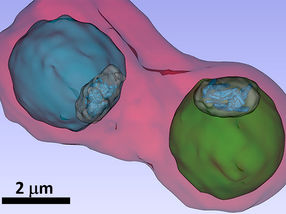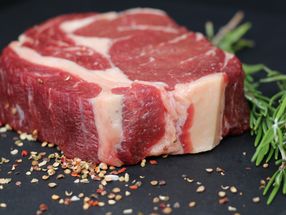Recycling of rare-earth elements from fluorescent and energy saving lamps
KU Leuven Chemists have developed a process, based on ionic liquid technology, for the recycling of the metals europium and yttrium from collected fluorescent and energy saving lamps. The metals are directly reusable in new lamps. Compared to traditional solvents, the ionic liquid has a multitude of advantages, including its selectivity for metal dissolution and its reusability.
For many modern electronic and cleantech applications rare-earth elements are indispensable. Although rare earths are not per se “rare”, they are difficult to mine and to purify. Furthermore, because the majority of the operational mines are located in China, the supply is subject to geopolitical tensions. Worldwide there is an increased interest to recycle rare earths from waste streams to mitigate the supply risk.
Two critical rare earths, europium and yttrium, are used in red lamp phosphor, a substance which transforms ultraviolet light into red light. This phosphor has been used for more than 40 years in the colour screens of televisions and in the tubes of fluorescent lamps. “Because it is very difficult to replace the red phosphor with a rare-earth free mixture, attention goes out the recyclability of the red phosphor fraction from fluorescent lamps. Although it is already obligatory to collect end-of-life fluorescent and energy saving lamps, the involved recycling is strongly focused on the safe removal of mercury from the waste. Because of the technical complexity to recuperate europium and yttrium using traditional solvents, the powder containing these two critical metals is typically not reused”, explains Professor Koen Binnemans.
To tackle this problem, KU Leuven chemists developed an alternative method. David Dupont: “Instead of employing an acid as the solvent, we use an ionic liquid: this is an organic dissolving agent that consists entirely of ions or electrically loaded particles. It does not evaporate, it is inflammable and it works very selectively: we can design it in such a way that it only dissolves the red lamp phosphor. The recycled europium and yttrium can be directly reused. Furthermore, the ionic liquid is also reusable for a next cycle.” With this new method the recycling requires less chemicals and energy, adds Koen Binnemans: “Both from a technical and environmental perspective, this approach is a very interesting alternative for traditional solvents.”
Original publication
David Dupont and Koen Binnemans; "Rare-earth recycling using a functionalized ionic liquid for the selective dissolution and revalorization of Y2O3:Eu3+ from lamp phosphor waste"; Green Chemistry.
Most read news
Original publication
David Dupont and Koen Binnemans; "Rare-earth recycling using a functionalized ionic liquid for the selective dissolution and revalorization of Y2O3:Eu3+ from lamp phosphor waste"; Green Chemistry.
Organizations
Other news from the department science

Get the chemical industry in your inbox
By submitting this form you agree that LUMITOS AG will send you the newsletter(s) selected above by email. Your data will not be passed on to third parties. Your data will be stored and processed in accordance with our data protection regulations. LUMITOS may contact you by email for the purpose of advertising or market and opinion surveys. You can revoke your consent at any time without giving reasons to LUMITOS AG, Ernst-Augustin-Str. 2, 12489 Berlin, Germany or by e-mail at revoke@lumitos.com with effect for the future. In addition, each email contains a link to unsubscribe from the corresponding newsletter.













![[Fe]-hydrogenase catalysis visualized using para-hydrogen-enhanced nuclear magnetic resonance spectroscopy](https://img.chemie.de/Portal/News/675fd46b9b54f_sBuG8s4sS.png?tr=w-712,h-534,cm-extract,x-0,y-16:n-xl)









































